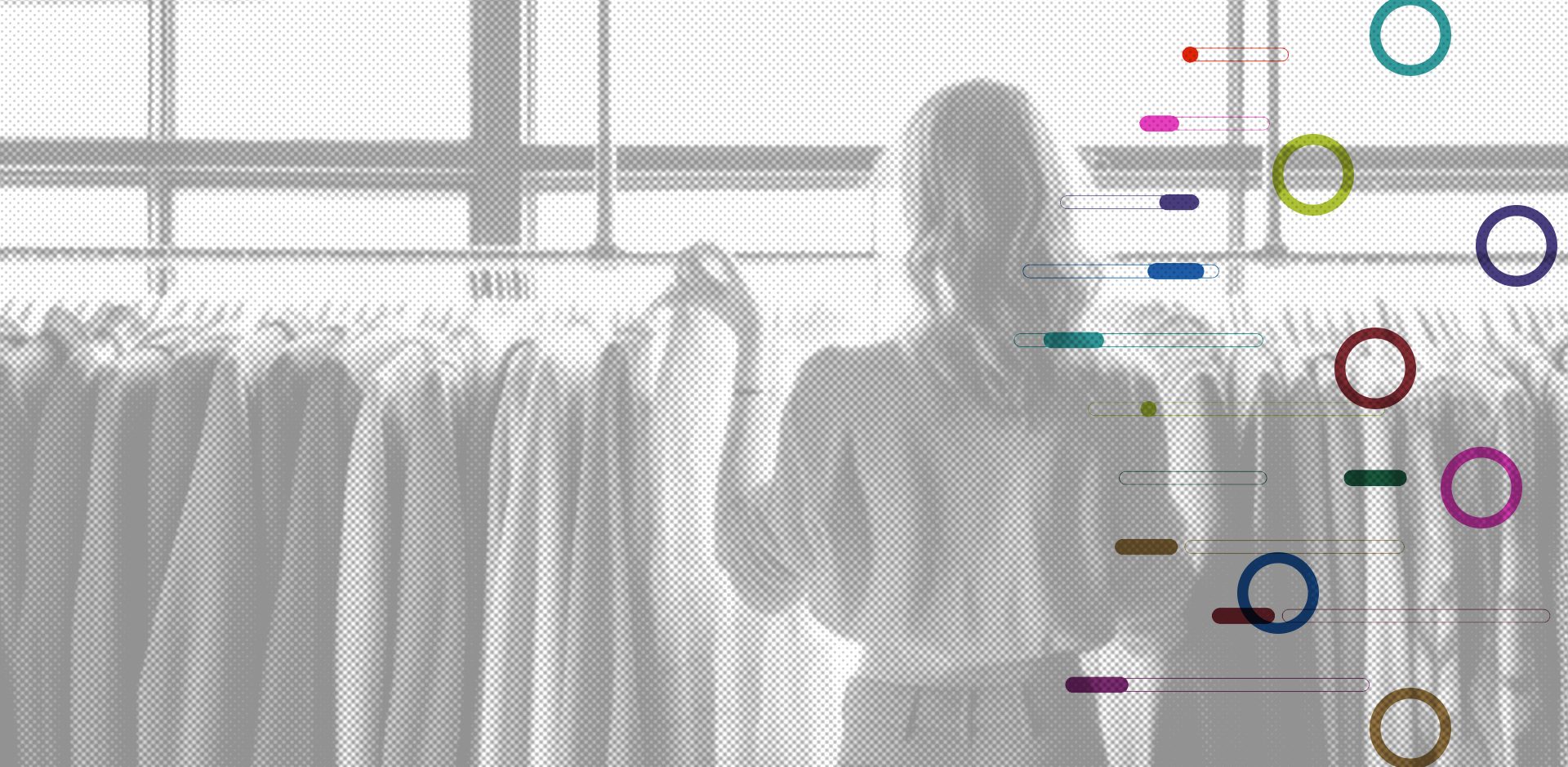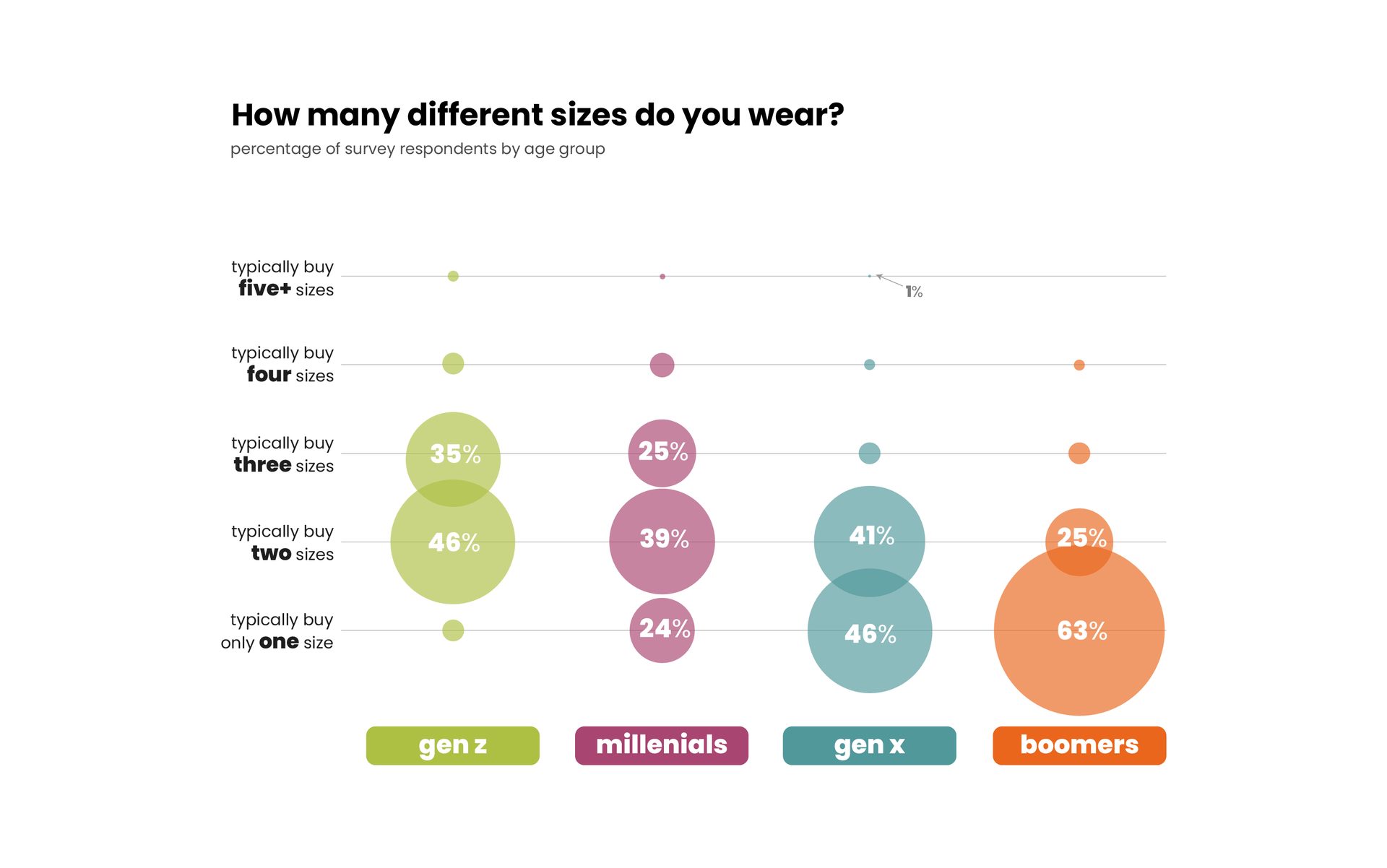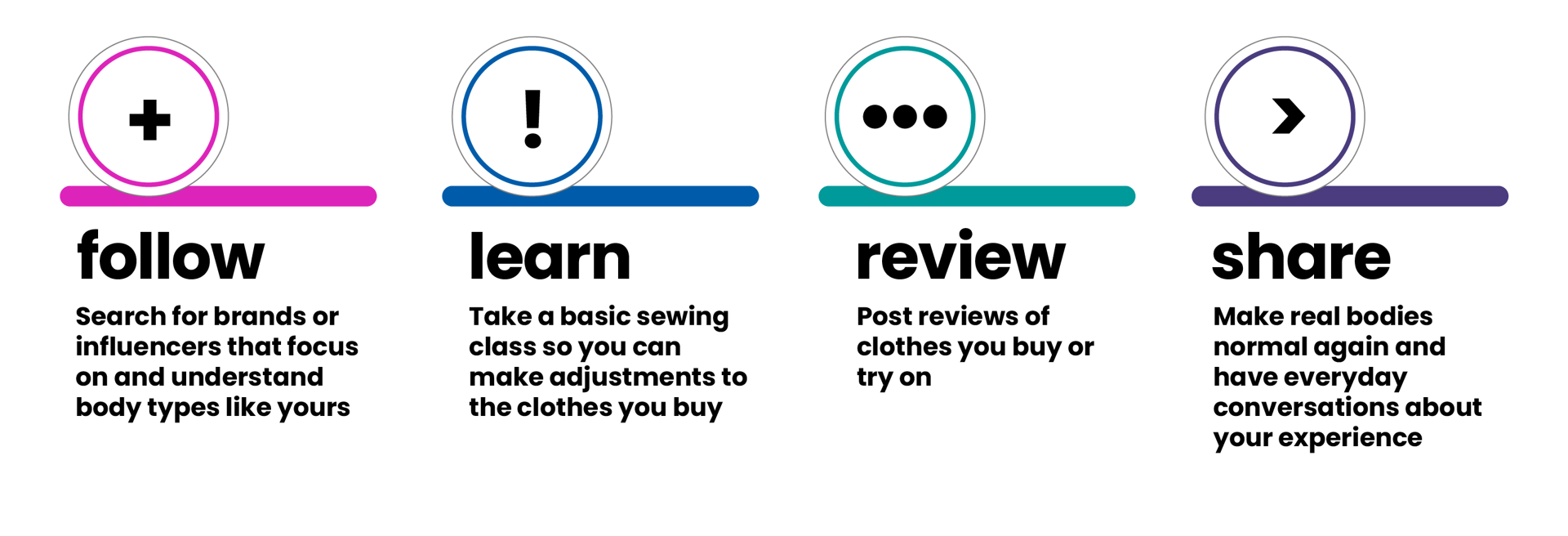
Body of
Evidence
The trouble with clothing fit
By Emily Hawarah
Have you ever tried on a new outfit in your usual size and been confused or frustrated by how it fit you? Does the range of sizes in your closet make it look like an entire army of women lives in your bedroom? If so, you aren’t alone.
82% of women regularly or consistently struggle with the fit of a clothing item they try on.
Last fall, I created a survey to try to understand how women relate to shopping and their clothes. I got 300+ responses from a diverse range of wearers of women’s clothing. If you’re a woman in the U.S. who has ever shopped for clothes, you probably won’t be surprised by what I discovered. But what I learned is still super interesting!
Some background.
The U.S. has been trying to standardize clothing sizes since the 1940s, but in 1995, the American Society for Testing and Materials (ASTM), whose mission is to set standards that enhance performance and help everyone have confidence in the things they buy and use, developed a standard table of body measurements for adult females.
Of these measurements, most retailers use bust, waist and hip to define their size charts. To get started, let’s take a look at the waist measurements ASTM assigns to women’s clothing sizes.
I compared these measurements to the published size charts of several dozen brands available in the U.S.
Real bodies.
If we dig in a little bit more, we can also look at the actual measurements and typically-bought clothing sizes of real people shopping for women’s clothing.
While there is definitely inconsistency at every size, it seems clear that the issue gets worse in larger size ranges. Why is that? What is it about larger bodies that clothing brands don’t understand?
In looking at some of the fit solutions retailers have attempted to roll out, the word “curvy” begins to show up in our sizing options. Retailers seem to realize that some women have a larger waist-to-hip ratio and needed a different fit in the waist for jeans with a standard size hip.
Let’s take a look at all three measurements for a few of our survey respondents. The illustrations below represent what a fitted, stretchy tank top would look like on different women.
Variations in where different bodies carry weight seem to be much larger as the garment size gets bigger, but when we think about how clothes are made (or even the mannequins clothes are displayed on), it becomes clear that the way we understand “bodies” relies on proportions that align with evenly-distributed weight.
Real shopping.
Across the entire size range, size charts are created for traditional body shapes and don't account for women who carry their weight in their chests or hips or only in their tummy. But in real life, things look very different. If we check back in on our survey, it becomes clear that women are making their best guess at how their real bodies fit into size charts.
of the 300+ survey participants...
Women are having trouble deciding what size to buy. Maybe it's because we don't know our measurements. Maybe it's because clothes are made for proportions that don't represent us.
I feel like we’re on to something. Typical size charts don’t account for the various places women carry weight, but real women do show up in the real world with an incredibly varied array of body shapes.
Most of us wear clothes that are mass produced and, in turn, standardized. So how do we navigate a world of inconsistent and un-individualized clothing sizes? Let’s look at the range of sizes some of our survey groups report buying.

Maybe with age comes some level of wisdom about how our bodies work with sizes. What do these wise older women know that Gen Z hasn’t figured out yet? Are they actually that much more in touch with their bodies? Or do they just know where to shop and refuse to change it up?
I don’t have enough data to answer those questions, but I do have enough to say that this whole topic is something we should be talking about more. I’ve discovered on my size data journey that we all seem to have our own stories of insecurity or trying to express ourselves with garments that just weren’t made to be individual.
Almost every woman I meet has crazy stories about fit or has been confused or frustrated by sizes.
Real people.
I think we should keep the conversation going, and we should be helping each other out when we find a brand that fits well. We should be sharing the names of good seamstresses when we need a special outfit tailored, and we should encourage each other to get to know and embrace the unique shapes of our own bodies.
I created a quick reference guide to help you get to know your own body and how to ask for what you need if you get things tailored. Feel free to download it, share it and talk about it with your friends!
I’m excited to see how future generations change the way women view ourselves in the world around us, and I hope those changes include a ton of creativity when it comes to fitting into fashion. In the meantime, I hope we can keep the conversation going by making the following four simple tasks a common part of our everyday lives.

